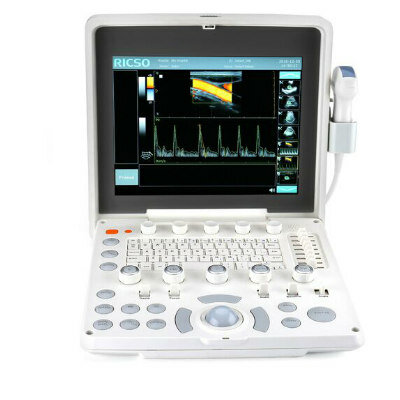Software Increases Visibility, Decreases Time to Confirm Placement of Medical Devices
By MedImaging International staff writers
Posted on 22 Jan 2013
New software improves the visual clarity of traditional chest X-ray images and increases radiologists’ efficiency by reducing the time it takes to confirm the proper placement of feeding, drug-delivery and pain management tubes and lines. The software has received European Union CE marking approval. Posted on 22 Jan 2013
Portable chest X-ray machines are routinely used to confirm placement of lines and tubes; however, the image quality makes it challenging for radiologists to differentiate these structures, and the rib and clavicle bones obscure visibility of chest tissue by up to 40%. Furthermore, radiologists incur substantial time adjusting the image to make the edges and tips of the devices stand out.
The software, ClearRead +Confirm, was developed by Riverain Technologies (Dayton, OH, USA). The software immediately processes any portable chest X-ray, creating a second, soft tissue image with the ribs and clavicles suppressed, and increasing the contrast, sharpness, and visibility of tubes, lines, and cardiac wires. Radiologists simply toggle between the two images to confirm proper placement of the devices.
A Georgetown University (Washington DC, USA) reader study assessed the time it took radiologists to locate: (1) PICC (peripherally inserted central catheter) lines, which are long, thin tubes that remain inside the chest to deliver nutrients, fluid, blood, and therapeutic agents over time to treat pain, cancer, or infection. PICC lines also are used to draw blood samples and provide kidney dialysis. (2) Nasogastric (NG) tubes, which deliver food and medicine to the stomach through the nose. (3) Wires that conduct or measure electrical impulses, including electrodes for cardiac pacing and defibrillation.
In the study, 334 chest radiographs were reviewed by 10 radiologists with and without the enhanced ClearRead +Confirm image. The software reduced the reading time by an average of nearly 19%, without comprising accuracy. Evaluating the conventional X-ray and ClearRead image together took an average of five and a half seconds less per image than evaluating the traditional X-ray image on its own, amounting to a savings of 30 minutes across all images.
Participating radiologists strongly agreed that the enhanced image increased their confidence in confirming the placement of lines and tubes and made it easier to see venous catheters. “The software-enhanced chest X-ray image increases radiologists’ confidence while reducing decision-making time and time to treatment, with no additional tests or radiation exposure for patients,” said Steve Worrell, Riverain’s chief technology officer.
ClearRead +Confirm employs proprietary machine learning and pattern recognition technologies in Riverain’s chest X-ray bone-suppression and computer-aided detection (CAD) software.
ClearRead +Confirm software is cleared for sale in Europe and is currently being reviewed for clearance by the US Food and Drug Administration (FDA).
Related Links:
Riverain Technologies














